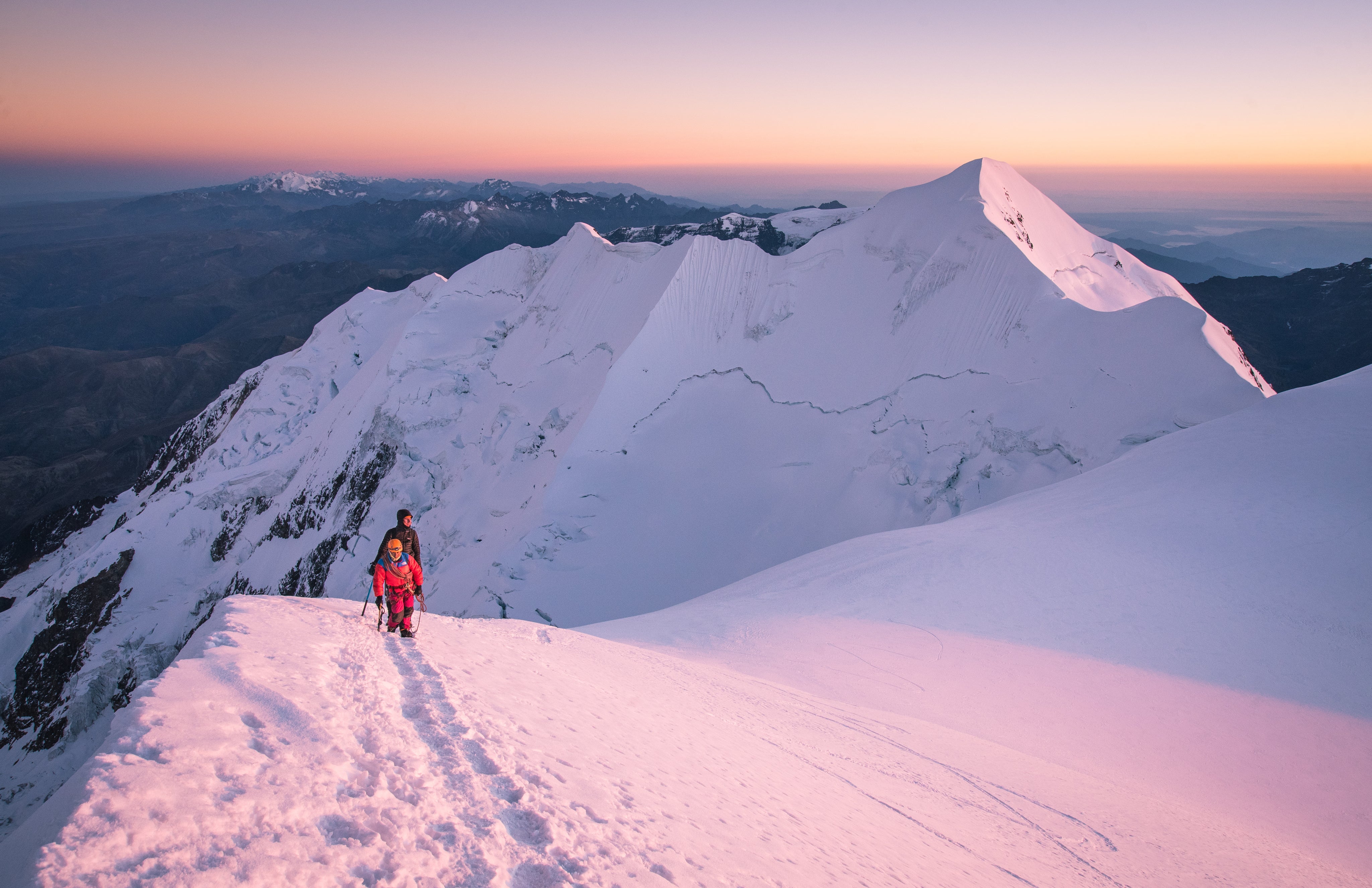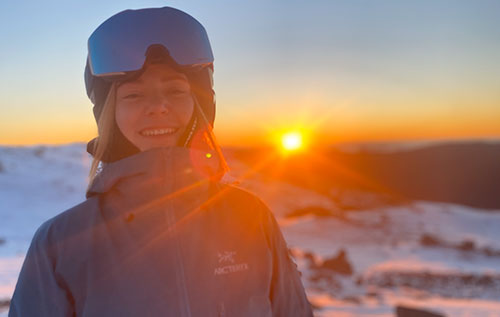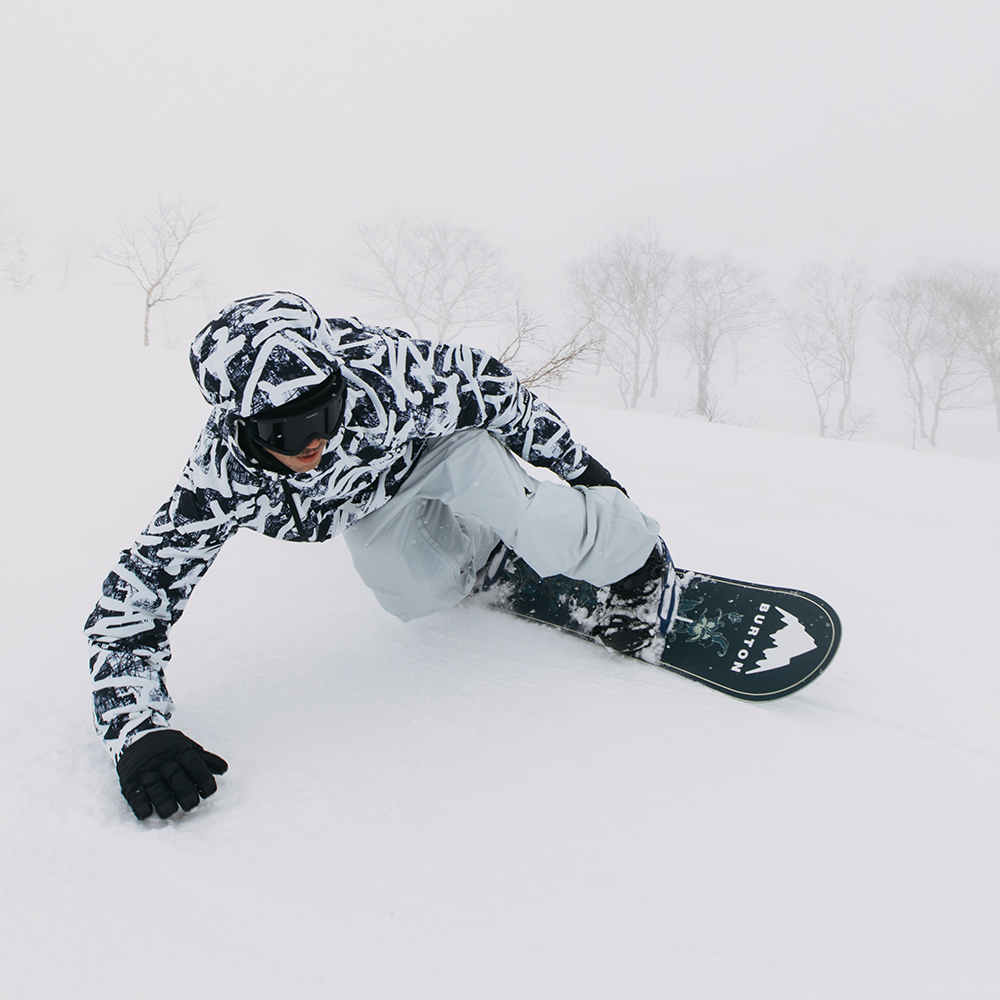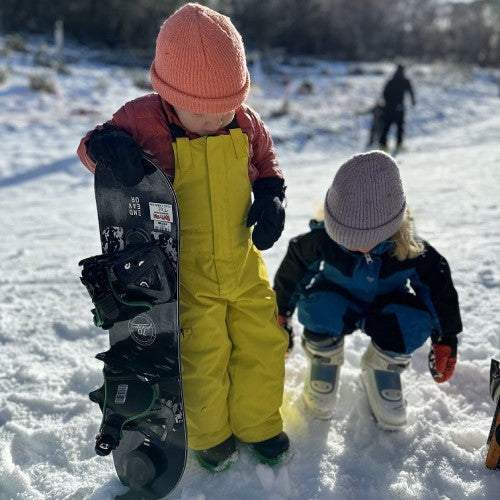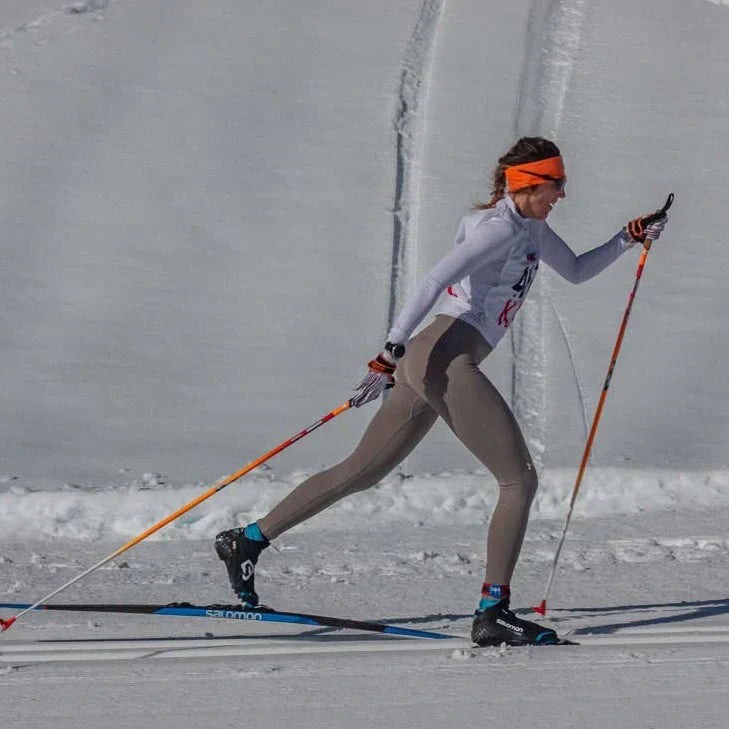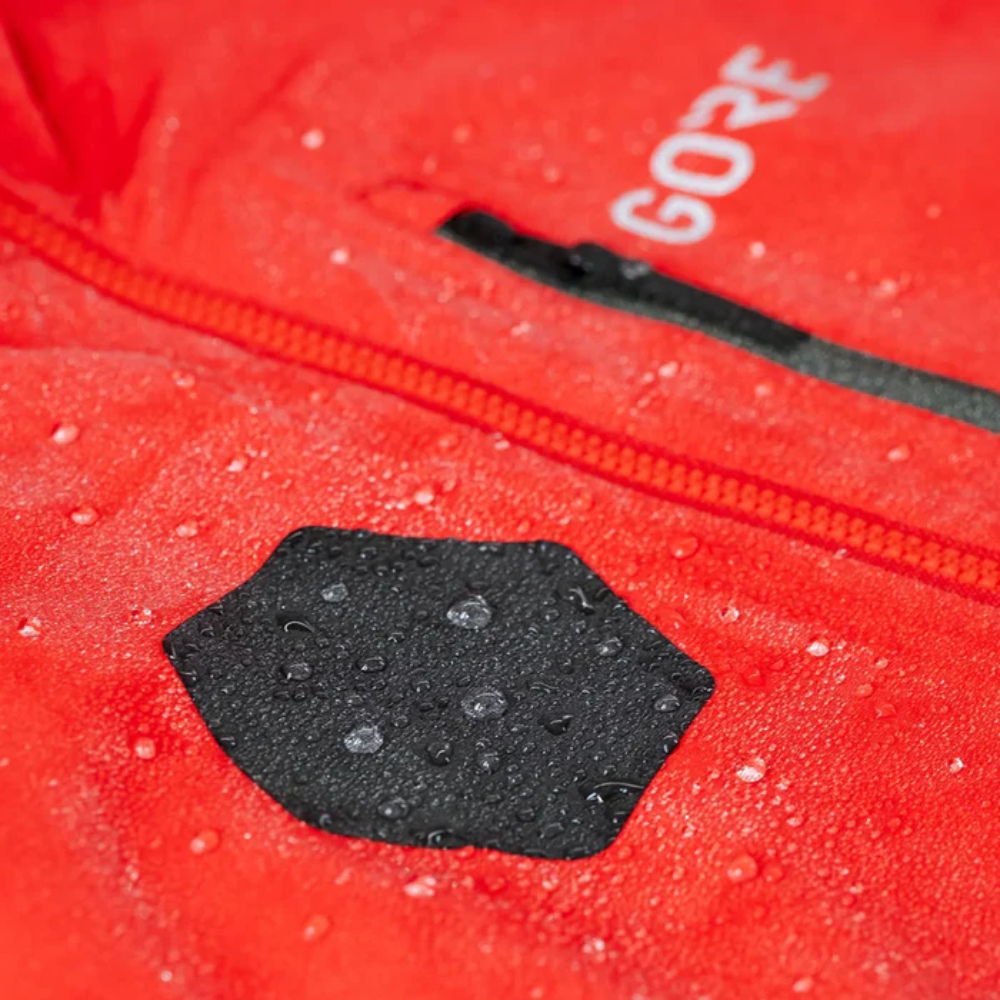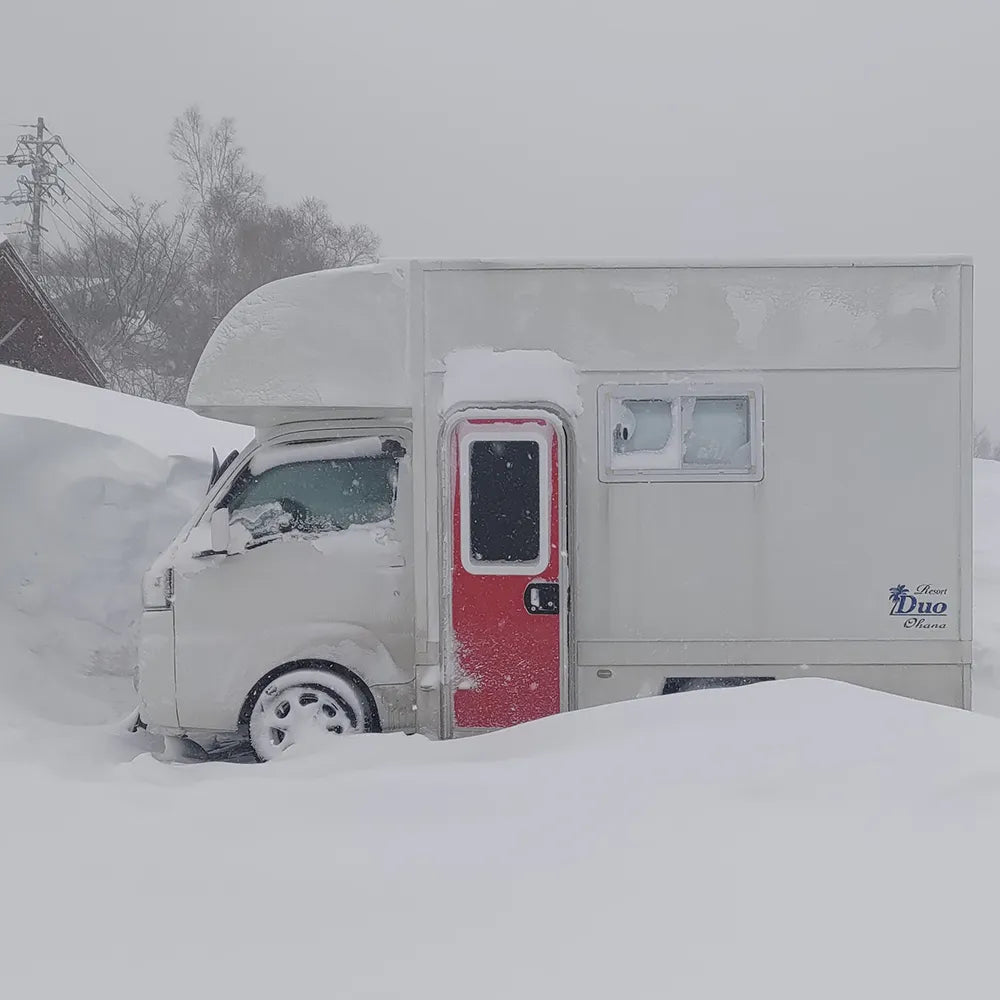Why Choose Argentina Over Other Ski Destinations?
Skiing/snowboarding in Argentina really sells itself. First, it's about the people, Argentinians love welcoming visitors and sharing our culture. We take pride in making you feel at home, whether that's by inviting you to a barbecue, teaching you how to drink mate, or just chatting on a chairlift.
Then, of course, there's Patagonia. The landscapes are breathtaking: jagged peaks, deep forests, and wide-open valleys.
Compared to skiing in Australia, the Andes are higher, the terrain is steeper and more varied, and the snow can stay dry and powdery for longer stretches. Resorts like Bariloche or Las Leñas give you access to big-mountain lines that really surprise people used to smaller ranges. That mix of local culture, world-class landscapes, and snow that keeps you on your toes is what usually blows visitors away.
When to Go: Argentina's Ski Season
The ski season in Argentina usually runs from late June through early October, though it can shift a little depending on storms. The heart of the season is July to September, when conditions are the most reliable.
Monthly Breakdown:
July - Peak season but crowded
-
Coldest temps and frequent storms
-
Solid snow cover but bigger crowds, especially during the two weeks of school holidays when Argentinians flock to the mountains
August - The sweet spot
-
Often considered the sweet spot with consistent snowfall, coverage is deep, and the mountains are fully open
-
Resorts like Cerro Catedral in Bariloche or Chapelco in San Martín de los Andes usually hit their stride around this time
September - Longer days, fewer crowds
-
Longer days, sunnier skies, and quieter slopes
-
On higher or south-facing terrain, like La Hoya in Esquel or Cerro Castor in Ushuaia, you'll still find wintery snow
-
Groomers soften into perfect spring corn by late morning
-
Lift lines shrink and prices ease a little
Best bet for Aussies? Plan for mid-August to mid-September to balance good snow, stable weather, and lighter crowds than peak July.

What to Expect: Daily Conditions and Altitude
Temperatures are tricky to pin down because, unlike Australia, Argentina's ski areas stretch across a wide range of latitudes and elevations. That means each resort has its own unique climate and snow conditions.
Typical Mountain Day:
|
Time |
Conditions |
What to Expect |
|
Morning (9-10am) |
Lifts start, temperatures lowest |
Firm, grippy snow on groomed trails, often well below freezing |
|
Midday |
Sun higher, conditions soften |
Shift from hardpack corduroy to smoother, more forgiving turns |
|
Afternoon |
Temperature swings show |
Lower slopes can turn slushy, higher terrain stays in good shape |
Altitude Impact:
Most Argentine resorts sit higher than the Australian Alps:
-
Catedral: tops out above 2,100m
-
Las Leñas: near 3,400m
-
Cerro Castor: starts at sea level but skis cold due to latitude
This means: Colder temps, drier snow, stronger winds, and more intense sun, so sunscreen and good lenses are non-negotiable.

Essential Gear for Argentine Conditions
One of the biggest mistakes visitors make in Argentina is assuming the conditions will feel just like home in Australia. The Andes are higher, the weather shifts faster, and the snow has its own personality.
Common Mistakes to Avoid:
Bringing skis or boards that are too narrow and tuned only for hardpack. Sure, there are groomers, but when a Patagonian storm rolls through you’ll want more surface under your feet. On the flip side, going too heavy with big powder gear can also be frustrating, since you’ll spend plenty of time on-piste and in mixed conditions.
Best All-Round Setup:
-
Skis: An all-mountain ski in the 95--105 mm waist range is the sweet spot. It's wide enough for soft snow or sidecountry laps, but still nimble on groomed runs.
-
Snowboards: A versatile all-mountain board with decent float but a solid edge for variable snow. Directional twins or freeride shapes do really well here.
-
Outerwear: Waterproofing and wind resistance matter more than insulation. Patagonia is notorious for strong winds, so a good shell and layering system beats a bulky jacket.
-
Other essentials: High-quality goggles with lenses for both flat light and sunny days (the Andean sun at altitude is intense), and proper sunscreen---sunburn on the snow here is no joke.
-
Layering System: In the Andes you'll face strong sun and quick temperature swings, so layering is key. I start with a merino or synthetic base layer, add a fleece or light puffer mid layer, and finish with a waterproof, windproof shell. A buff, liner gloves, and sunglasses make the day more comfortable. Always carry an extra layer, mornings can be below zero and afternoons feel almost spring-like.
Pack Smart: What to Bring vs Rent
When you're planning a ski trip to Argentina, what you pack vs what you rent isn't just about convenience, it's also shaped by the country's unique economy and what's actually available locally.
Need a complete packing guide? Check out our snow holiday packing checklist and adapt it for Argentina conditions.
Bring from Australia:
-
Boots - If you ride with BOA or other specialised systems, keep in mind those models are harder to find in Argentina, and if something breaks, spare parts or repairs aren't always available.
-
Goggles & lenses - Quality options exist, but the variety isn't as wide as in Australia, and prices can be higher than expected.
-
Outerwear and layers - Technical clothing is available but usually limited in style or overpriced compared to Australia. Pack what you trust.
-
Sunscreen - This is the classic example of Argentina's economy. Rent for an apartment might be less than USD 500 a month, but sunscreen? That can cost more than in Sydney.
Rent Locally:
-
Skis, boards, and poles - The big resorts like Bariloche, Chapelco, and Las Leñas have solid rental fleets. If you're not too picky about the latest models, you'll find gear that does the job.
-
Avalanche equipment - If you're heading off-piste with a guide, it's easier to rent beacon/shovel/probe in Argentina than to carry them across the Pacific.

Where to Ski: Resort Recommendations
If you're heading to Argentina, asking for the "best" resort is like asking to pick your favourite child, they're all special in their own way. But I get it, you need to choose, so here's how I see it:
Guide to Argentina's Ski Resorts:
|
Resort |
Location |
Best For |
Why Choose It |
Getting There |
|
Chapelco |
San Martín de los Andes |
Beginners & Families |
Perfect family vibe where kids can learn without stress, tree runs for protection. The town is stunning. |
Limited daily flights to San Martín de los Andes airport |
|
Cerro Catedral |
Bariloche |
All Levels |
The big brother - more lifts, more terrain. Natural progression from green to black runs. Bariloche is basically the chocolate capital of South America. |
Fly direct to Bariloche from Buenos Aires |
|
Las Leñas |
Mendoza |
Advanced Riders |
Where we go to get humbled. The Marte chair takes you to 3,430m with famous freeride terrain - steep chutes, wide-open faces, endless off-piste options. |
Fly to Mendoza, then transfer |
|
La Hoya |
Esquel |
Powder hunters |
Those south-facing slopes catch snow and keep it when everywhere else is getting rained on. Plus, you might have the mountain to yourself some days. |
Limited daily flights to Esquel airport |
|
Cerro Castor |
Ushuaia |
Long season |
Literally the southernmost ski resort in the world. The snow is reliable, the season is long, and skiing at the "end of the world" is something you'll never forget. |
Fly to Ushuaia from Buenos Aires |
The Legendary Marte Chairlift Experience:
The Marte chairlift is the icon of Las Leñas, taking skiers up to around 3,430 metres, the highest lift in the resort. From the top, you can drop into some of the most famous freeride terrain in South America: steep chutes, wide-open faces, and endless off-piste options. When conditions line up and the lift is open, you can link runs that stretch up to 7 kilometres back down to the base, with vertical drops of over 1,000 metres.
Getting There: Travel Routes and Transport
The most affordable and convenient route from Australia is usually Sydney or Melbourne → Santiago (Chile) → Argentina.
Route Options from Santiago:
Option 1: (Recommended): Fly to Buenos Aires first
Spend a couple of days experiencing one of Latin America's great cities. It’s full of culture, food, and history, and it’s the perfect way to start getting a feel for the country.
From there, you can hop on a domestic flight to your ski destination. Just note that smaller airports like Esquel (La Hoya) or San Martín de los Andes (Chapelco) only have limited flights each day, so book early.
Option 2: Direct to ski destinations
If you’d rather skip the city and head straight to the mountains, you can fly directly from Santiago into Mendoza (for Las Leñas), Bariloche (for Catedral), or Ushuaia (for Cerro Castor).
Getting Around Once You're There:
Once you're on Argentine soil, getting to the resorts is straightforward:
-
Arrange transfers with your hotel
-
Grab a taxi or shuttle
-
Rent a car for maximum freedom - makes it easier to get from hotel to lifts, plus explore nearby lakes, towns, and attractions at your own pace
Cultural Tips and What Every Aussie Should Know
Daily Rhythm and Meal Times:
Things move at a slower pace than in Australia. Lifts start around 9am, and long lunches in mountain refugios are part of the culture. Don't be surprised if après-ski stretches late into the night. People eat late here too: lunch around 2pm, dinner after 9pm. Don't miss the chance to try an asado (Argentine barbecue) or share mate on the chairlift.
Social Culture:
Argentinians are open and curious, so expect chatty lift rides and warmer greetings (yes, even a kiss on the cheek is normal).
Be Prepared for Altitude:
Our resorts sit higher than anything in Australia. You might feel short of breath or tire faster initially, but most people adjust quickly. Take it easy on your first runs and drink plenty of water.
Après-Ski Argentine Style:
After-ski is huge at Argentina's most famous resorts. The beauty of our late-night culture is that even after the last lift, you'll have plenty of time to explore town, grab coffee, or sit down for dinner without feeling rushed. The ski day might be over, but in Argentina, the night is when we really come alive.
Chilean Patagonia is Close:
If you're feeling curious about Chilean Patagonia, some crossings are surprisingly close. In certain spots, you can drive across the border in as little as 40 minutes. If you're skiing in Las Leñas, you could make the trip to Portillo in Chile in about 6 hours by car (weather and border traffic permitting). From Mendoza, Los Penitentes is only about 40 minutes from the Chilean side, too.
Posted by Rhythm Snowsports on

